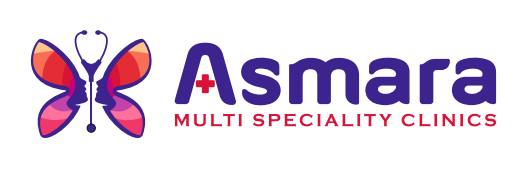Scabies is a skin condition that can affect anyone, but it’s quite common in children. Early detection is key. Spotting scabies quickly helps stop it from spreading. Kids often come into contact with others at school or daycare, making them more likely to catch it from one another. Scabies thrives in places where children are in close contact for long periods. Knowing how to recognize it means you can take action right away, easing symptoms and preventing it from reaching others. Understanding these basics is essential for parents who want to protect their kids from discomfort and illness.
Understanding Scabies and Its Causes
Scabies is caused by tiny mites that burrow into the skin. It’s basically a skin infestation. The mites themselves aren’t directly harmful, but they bring about distressing symptoms. What really causes issues is your child’s skin reacting to the mites and their droppings. This results in common symptoms like intense itching and rash. These mites are incredibly small but pack a punch when it comes to discomfort. Recognizing why scabies occurs can help make sense of the symptoms your child might experience.
Transmission: How Children Get Scabies
Kids commonly get scabies through skin-to-skin contact. Even a brief touch is enough to transfer the mites. Sharing items like clothing, towels, or bedding can also spread scabies. The more kids are grouped together, like in schools or playgrounds, the higher the risk of transmission. The chances increase in crowded environments or places where kids are in close contact with one another. So whether they’re playing, learning, or napping, it’s vital to be aware of how easily scabies can pass around and to keep an eye out for early symptoms in such settings.
Recognizing Symptoms of Scabies in Children
The earliest sign of scabies is itching, often severe and surprisingly worse at night. This can make it hard for kids to sleep, leading to daytime irritability. A red rash usually accompanies the itching. The rash might resemble bug bites and can appear as red bumps or blisters. Visible burrow tracks, which look like thin, snaking lines under the skin, are another sign. In prolonged cases of scabies, the skin can become scaly or crusty. For infants and very young children, they might be more fretful and hard to console. Noticing these symptoms early helps in getting treatment and providing relief for your child.
Typical Areas Affected by Scabies in Children
In children, scabies typically appears in different spots depending on their age. Younger kids might show symptoms on their face and scalp. Meanwhile, older children often have infestations around their wrists, waistline, or between fingers. Recognizing these patterns can make it easier to identify the condition early on. This knowledge is crucial—by knowing where the rash is likely to form, parents can catch it faster and begin treatment, leading to quicker relief and reduction in spreading.
Distinguishing Scabies from Other Rashes
When trying to decide if a rash is scabies, there are some telltale signs to consider. One major clue is the presence of those burrow tracks and the persistent itching that’s hard to calm. Regular rashes might fade with typical treatments like creams. But if a rash remains unresponsive to usual remedies, scabies could be to blame. Consider this particularly if the itching is intense and marks don’t seem to go away. Understanding these differences helps avoid confusion and ensures prompt treatment.
What to Do if You Suspect Scabies in Your Child
If you think your child might have scabies, take immediate steps. Stop all close contact with others and avoid sharing items like towels or bedding. Make sure you contact a healthcare professional for an accurate diagnosis. Getting medical advice ensures proper identification and treatment. Starting treatment early is a big factor in reducing symptoms and halting its spread. Treatment often involves prescribed creams or lotions, so seeking expert help is a priority.
Diagnosis: What Happens at the Doctor’s Office
When you visit the doctor for scabies concerns, they’ll typically perform a skin scraping. This simple test helps confirm the presence of mites. Doctors might examine these samples under a microscope. Diagnosing scabies in children is often quicker because their skin might react more severely, making signs more noticeable than in adults. This straightforward approach aids in prompt and effective treatment.
Scabies Prevention Tips for Families
Preventing scabies involves maintaining good hygiene. Wash clothing, bed linens, and towels regularly in hot water. This kills any lingering mites. Vacuuming carpets and furniture can help too, removing mites from your surroundings. It’s also wise to treat everyone in close contact with your child, even if they don’t show symptoms. This step helps prevent reinfestation, ensuring the scabies cycle is broken and everyone stays healthy.
Requesting Urgent Medical Attention
In some cases, urgent medical attention is necessary. Severe rash, signs of infected skin, or an intense worsening of symptoms needs immediate care. These signs might mean the condition’s getting worse or that there’s a secondary infection developing. Rapid response can help manage scabies effectively and stop further complications. So don’t wait to get the support and treatment needed.
Conclusion: Managing and Treating Scabies Effectively
Recognizing scabies early is important for a fast recovery. Early medical consultation is key, so act quickly if you suspect this condition in your child. With the proper treatment and care, children typically resume their normal activities in no time. Being vigilant helps you catch it early and take the right steps for relief. Practice good hygiene to reduce the chance of re-infestation. This proactive approach means a healthy, happy child free of scabies.
Schedule an appointment at Asmara Clinics today for prompt treatment and expert care!



